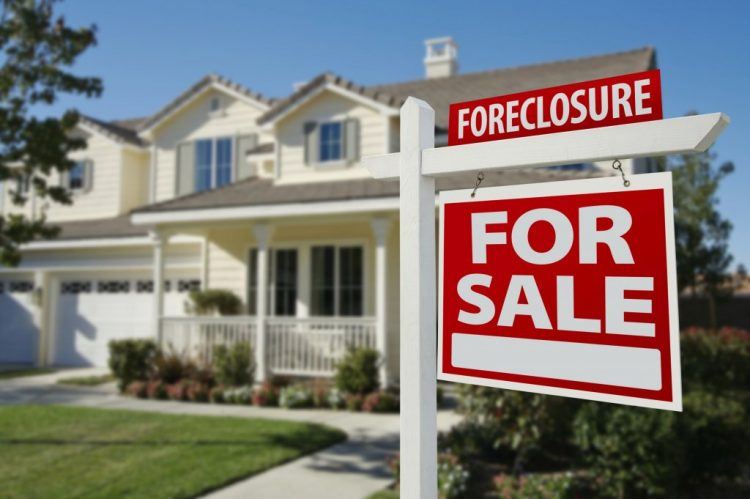
In the years following the burst of the housing bubble in 2007, foreclosed residential properties flooded the market. This large inventory of homes sold pre-foreclosure, short sales and bank-owned properties profoundly changed the real estate market. With the demise of the subprime loan business, new homeowners found it harder to qualify for a mortgage and had to prove they had the funds to make the monthly payments, with a larger down payment required.
This year, most mortgages are only going to applicants with good credit, with those who have FICO scores under 600 comprising only 0.47% of homeowners with recently closed sales, however the FHA will allow some borrowers with a low score of just 500 to buy, if they have a down payment of 10% according to Inman.com. The good news is that some that had their homes go into foreclosure can reapply for a mortgage in just seven years if they meet the new criteria go get back on the property ladder. If a borrower entered into a short sale to avoid foreclosure, they can reenter the property market with a Fannie Mae loan in as little as four years.
Just a couple of years ago once a pre-approval was in hand, prospective home buyers had their pick of properties, particularly “as is” homes that were going for much less than the original purchase price. Many of these homes needed substantial repair work due to abandonment and/or neglect; however, the prices that could be negotiated made them a good deal. In the past few years, foreclosures have slowed in most areas of the country, which means a lower inventory of available properties. Corelogic reports that April of 2016 saw a 15.8% decrease in home foreclosures as compared to the year prior.
They credit improved employment outlook and fewer homeowners becoming delinquent as the reason the foreclosure tide has been stemmed, at least comparatively. In the years 2008-2012, just about every block in America had a property for sale by the bank, and everyone knew of someone who lost their home. Some blamed the market and the designers of the subprime loan scheme, and some blamed renters who signed off to own a home before they were ready. No matter what circumstances led to the crisis, individuals and families were out on the street, many of them finally leaving after months spent trying to stay in their homes. The demand for rental properties went up; however, homes for sale were plentiful.
According to Trulia.com, for the first time in years, home buyers in America are facing a housing shortage. In line with the law of supply and demand, fewer houses mean higher purchase prices. What these means for today’s homeowner is that they will have far fewer distressed properties listed, and will need help on two fronts. Meeting the stricter qualifications to get a home loan, and finding an affordable property.
Another factor complicating this new housing market is the rise of investors buying up a large portion of these available properties, as cited on Trulia.com. Increased prices of premium homes go together with the smaller number of starter homes, making it harder for first time or formerly forclosed homebuyers looking for a fresh start to find an affordable property. The state where this is most keenly evident is California, where finding an affordable starter home is the most difficult. The most outstanding statistic overall if the 40% drop in inventory of trade-up or starter homes since 2012 nationwide. Even buyers looking for premium homes are spending more of their salary on house payments, by having to pay a 2.6% greater portion of their income.
As job opportunities and salaries are not growing fast enough to allow more buyers the freedom to purchase more expensive properties, and there not being enough inventory for starter home buyers, home sales are slowing, particularly in 2016, after an initial short-lived recovery. Fewer homes are being foreclosed, but some are still in the hands of the banks, waiting for eligible buyers.
Those who do try to purchase a starter home will need a greater percentage of their income to do so. In 2012, the median percentage of income spent on housing was 32.2%–now that figure has gone up to 37.7%. Trulia notes that the south and west are the toughest starter home markets, with inventory in Salt Lake City of those type of homes dropping 88% in just four years. Those in areas of California like Oakland will now pay almost 77% of their income to get a starter home, due to the area’s growing employment sector making it an attractive relocation destination, particularly for millennials in the tech field.
Prices are inflating and many couples starting a family who used to buy a home are forced into the rental market. Areas such as San Diego are sharply affected, according to NBC. Today’s market is great news for sellers who can ask for top dollar for their property on the market but buyers and renters are paying to dollar as well. The article also cites that the protracted time it takes to obtain building permits in California makes it hard for new inventory to be built to lessen the demand. Real estate agents are finding that in some areas, like San Diego, homes are selling within days of being put on the market. Some homes that are set up to be put on the MLS (Multiple Listing Service) never make it that far. Home buyers are forced to bid much higher than they intended for properties and they are feeling the stress. Although buying a home is expensive, many renters are paying more to rent than they would for a house payment.
Will this steady rise in home prices lead to another eventual real estate bubble? No one knows for sure, but for right now, in many areas across the United States, and around the world, it’s definitely a seller’s market.


Comments
Loading…